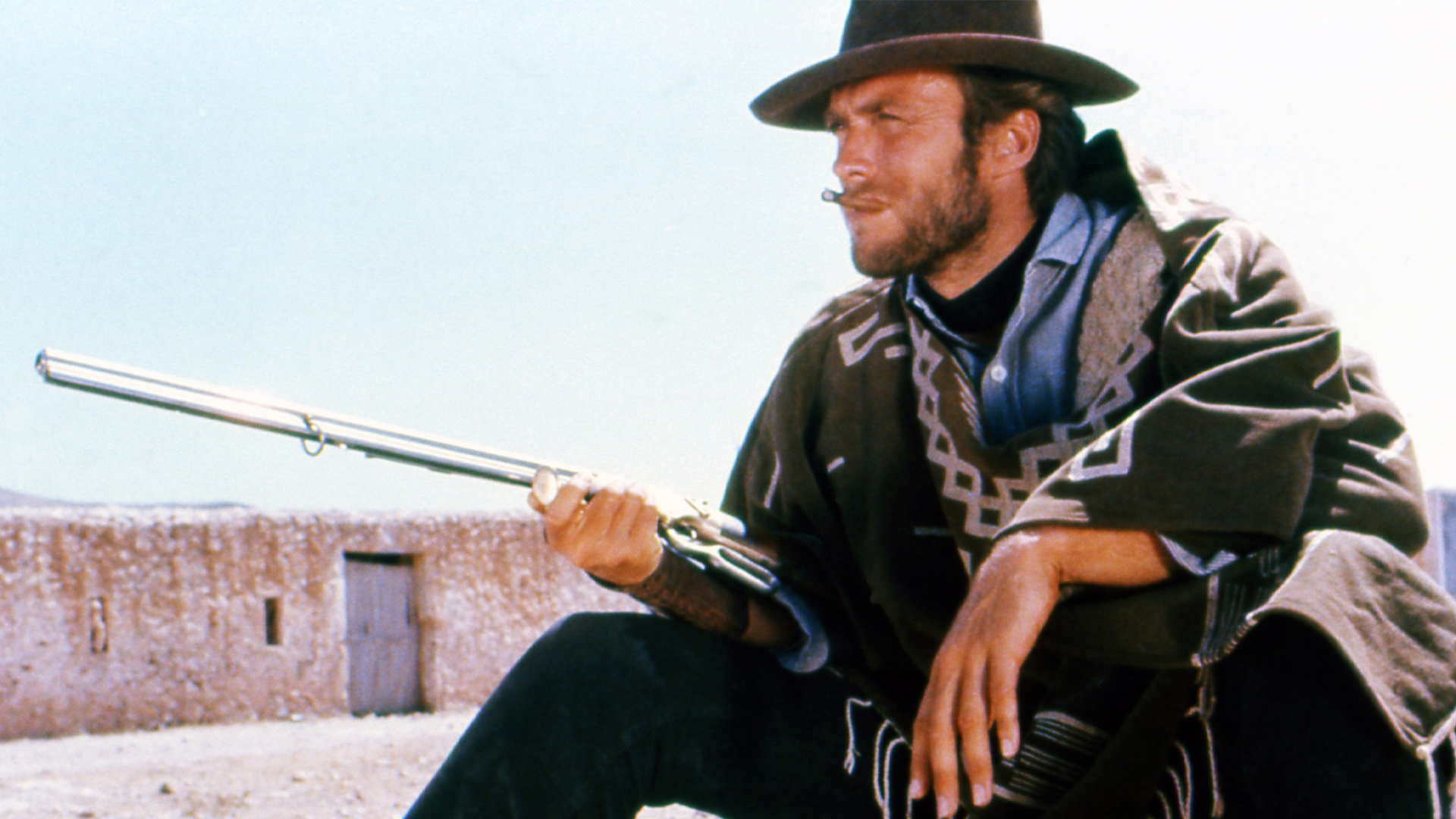How Italians started one of America’s most popular genres
The western is the quintessential American genre and a staple of Hollywood since the early days of silent films. By the 1960s, the genre transitioned to television with shows such as Gunsmoke, Wagon Train, and Have Gun Will Travel.
Then, in 1964, the western was forever changed by a visionary Italian filmmaker who didn’t speak English, and an American television star looking to change his image.
The film was A Fistful of Dollars, and the “spaghetti western” was born.
The classic was directed by Sergio Leone, who had never made a western before. It became an unlikely box office smash. There had been Italian westerns made in that country over the years, but none struck a chord with audiences quite like that gritty epic.
“Pre-1964 Italian westerns… were very much in the Hollywood style, with stories about real-life western heroes or ‘cavalry and Indians’ westerns or were western comedies starring popular Italian comedians like Walter Chiari and Ugo Tognazzi,” according to Howard Hughes, who has authored several books about spaghetti westerns, including Once Upon A Time in the Italian West.
“Leone’s first western was such a departure from anything that came before it, in terms of pretty much every aspect – the Spanish locations, the ‘new’ actors, the authentic costuming, the original music,” he added.
Two other elements made A Fistful of Dollars unique, Hugh said. The film’s music and its star.
“Clint Eastwood’s charisma and Ennio Morricone’s music are massive factors, too,” he said. “The film would have been less of a success if any of these elements – Leone, Eastwood, Morricone – were omitted.”
During that time, Italian production houses were churning out hundreds of low-budget films a year. After Dollars, many shifted to making westerns. These films used Leone’s work as inspiration, often mimicking his tone, characters, and style. Spanish journalist Alfonso Sánchez is generally credited for using the phrase “spaghetti western” to describe these low-budget films, and the label stuck.
The box office success of these cheap-to-produce movies would span nearly a decade. Other Italian filmmakers would soon make their mark on the spaghetti western subgenre.
“The key players who shaped the genre are undoubtedly Sergios Corbucci and Sollima, and Duccio Tessari,” Hughes said. “Each made westerns in their own style, but enhanced and expanded Leone’s (and western) mythology as a whole.”
In 1966, Corbucci’s Django proved to be a hit with audiences. The film starred Italian actor Franco Nero, who would appear in several spaghetti westerns and enjoy a lasting film career. Django would also spawn dozens of imitations. The character name would even be lifted and used in many film titles, despite having no connection to the original movie.
A Pistol for Ringo, released in 1965, was met with similar popularity. Directed by Tessari, and starring Giuliano Gemma, both would go on to have long careers making spaghetti westerns. And like Django, the name Ringo would be borrowed for many other films. However, in this case, Tessari and Gemma would reunite immediately for the sequel, The Return of Ringo.
Sollima made three westerns, from 1966 to 1968, Hughes said. They were The Big Gundown, Face to Face, and Run Man Run.
“His films approach Leone’s closest in quality and style,” he noted.
Actors from around the globe would headline spaghetti westerns, including the Cuban-born Tomas Milian and Peter Lee Lawrence from Germany. Several American actors also headed to Europe to take on roles in the increasingly violent Italian westerns.
In 1966, Burt Reynolds starred as a Native American out for revenge in Navajo Joe. Charles Bronson, perhaps best known for the Death Wish films, starred in several Italian-produced westerns, including La Bataille de San Sebastian alongside Anthony Quinn in 1968, and Chato's Land in 1971. Actors Lee Van Cleef and Chuck Connors appeared in several spaghetti westerns during their careers.
Although produced by Italian filmmakers, these spaghetti westerns were not exclusively filmed in Italy. Many were shot in the Almería region of Spain. That location was used often because of its bleak terrain and the feeling it was an area that most closely resembled the American Southwest. They would also often include cast and crew from various countries, with everyone speaking different languages.
Most of the films were also co-productions with companies in Italy, Spain, and West Germany, according to Hughes.
“In Italy, westerns became the biggest cinema product for a couple of years,” Hughes said, however, this didn’t last forever.
As the trend to make more and more spaghetti westerns continued, oversaturation eventually impacted box office returns. And by the early 1970s, film companies moved on to other genres.
“The ‘Trinity’ comedy westerns 1970-71 (They Call Me Trinity, Trinity is Still My Name) outgrossed Leone’s westerns at the Italian box office,” Hughes said. But “as western popularity waned, audiences moved on to urban cop movies inspired by Dirty Harry, Death Wish, and The French Connection.”
The films produced during that time, however, would have a lasting impression. Celebrated filmmakers such as Quentin Tarantino credit the subgenre as a major influence on their work. He would ultimately pay homage to those films with the Oscar-winning Django Unchained.
Martin Scorsese also calls The Good, The Bad, and the Ugly “one of the most influential Westerns ever made.”
“[The spaghetti western] has also carried over since into adverts, music, and other areas,” Hughes said. “Leone’s big close-ups, especially of eyes and guns, were particularly influential, and can be seen everywhere today.”
“It was an incredibly productive era in Italian filmmaking,” Hughes said, “and there are still films out there being discovered/rediscovered all the time.”


